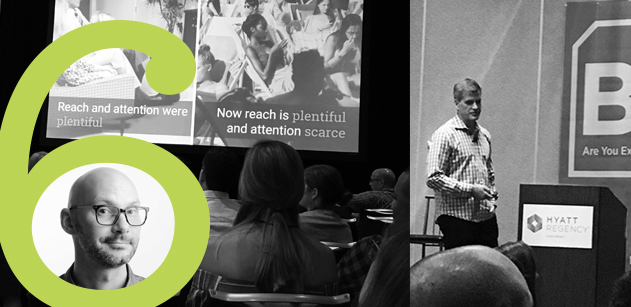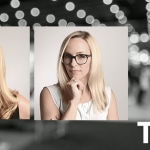6 Factors Driving the Future of Brand Building
At Seed, we are charged with helping our clients develop meaningful innovation that helps grow their business. The classic approach to innovation has always focused on new product development as the primary driver of brand growth. However, ongoing changes in consumer behavior and retail channels have flipped the classic approach to brand building on its head—resulting in the need for agencies like Seed to develop new tools and processes to assist clients as they rethink their strategies.
For this reason, I was very interested in hearing the keynote presentations at Brandemonium International Brand Conference & Festival. Opening night featured presentations from Southwest Airlines and Google. Both talks were great, but I found Kirk Perry, Google’s President of Brand Solutions, to be particularly inspiring.
Kirk talked about the critical factors that brands must address if they are to survive. The presentation began with 3 questions. Who in the audience has a Blackberry? Who remembers using Netscape? Who remembers searching the internet using AltaVista? After a nostalgic chuckle from the crowd his point was clear: These companies that used to feel as permanent at the ground we walk on are no longer in existence. Why? Because they waited too long to change.
He then went on to present the following 6 factors that are driving change for all brands.
Factor 1: The mobile revolution is here.
If your brand does not have a mobile solution, it may be too late. Reach is plentiful for mobile marketing solutions, but attention is scarce. Consumers simply have too much content to sift through. As a result, top brands have gotten really good at shrinking down a 15 second message to just 6 seconds—and they’ve mastered the ability to shoot content for 150 mobile spots at one time.
If mobile has already forced us to be this efficient, imagine what’s next?
Factor 2: Brands that produce magical experiences for consumers win.
Consider Tesla’s mobile website—where you can purchase a car in 3 clicks—or the Hilton Hotels app that turns your phone into a key card and a digital front desk clerk. Successful brands are going beyond expectations to create BPA (Blow People Away) Experiences. For brands to compete, they must deliver such a high level of customer service, that the experience far exceeds what consumers thought was possible.
How can brands rethink their products, delivery and business models to blow people away?
Factor 3: Machine learning and AI are surpassing expectations.
Good examples of the potential for Machine Learning and AI range from Google’s driverless cars to AlphaGO AI—a computer program that has learned to play the ancient Chinese game Go, which requires nuance and intuition to win. AlphaGO was not only able to learn how to play the game, but the program leveraged artificial intuition to defeat the world’s leading human player.
How can brands understand the potential for this powerful technology and find a way to implement it effectively?
Factor 4: Seamless assistants are defining how consumers interact with brands.
Kirk’s message began with a great clip of L2’s Scott Galloway interacting with an Amazon Echo and its voice assistant, Alexa. As Galloway asks Alexa for batteries, he is presented only with Amazon Basic battery options, until Alexa tells him it is unable to find any more options. This clip will send shivers down the spine of any brand marketer.
What can brands do to better reach consumers when voice activated assistants curate so many of their choices?
Factor 5: Consumers demand immersive experiences.
Pokémon Go was just the beginning. Virtual reality and augmented reality are changing the way we experience brands and how we shop for products. Now consumers have the opportunity to experience products virtually, before ever purchasing the real thing. For example, Wayfair lets consumers use mobile devices to virtually place sofas couches and chairs into their home. Customers can view the furniture in three dimensions, walk around the piece and get a sense of how it fits the space all before deciding whether or not to make a purchase.
How can brands deliver an immersive experience that gives them an edge?
Factor 6: Wearable technology is changing healthcare.
While smart watches and fitness trackers may be the most recognizable wearables in the market, they have given rise to other smart health monitoring devices. For instance, Smart Lens, a contact lens with embedded sensors, can report on a person’s overall health by constantly monitoring what is happening in the eye. Skin patches that send data to your smart phone can monitor UV light exposure, heart rate and blood oxygenation. The near future of healthcare is focused on the consistent monitoring of a person’s health through these devices—giving you and your doctors access to data from every day of your life compared to once-a-year physicals.
How can brands take advantage of wearable technology to improve lives and become more helpful to today’s consumers?
Kirk Perry’s presentation validated many of the changes brand marketers are facing today. It also reinforced Seed’s efforts to continually develop new tools and practices for brand growth. Please contact me to learn more about how Seed can help your brand adapt to these 6 factors and develop a culture of change that will help chart an enduring path forward.
Eric Scheer is an SVP, Creative at Seed Strategy where he specializes in melding solid strategic thinking with powerful design.
P.S. You can follow Seed Strategy on our LinkedIn, Twitter, Facebook and Instagram pages.










